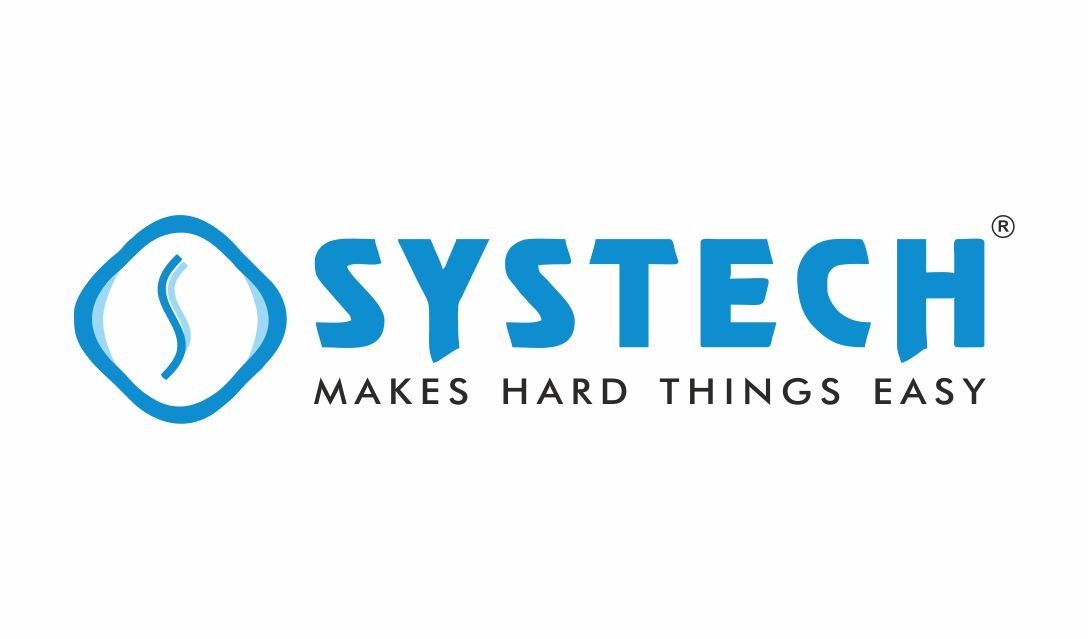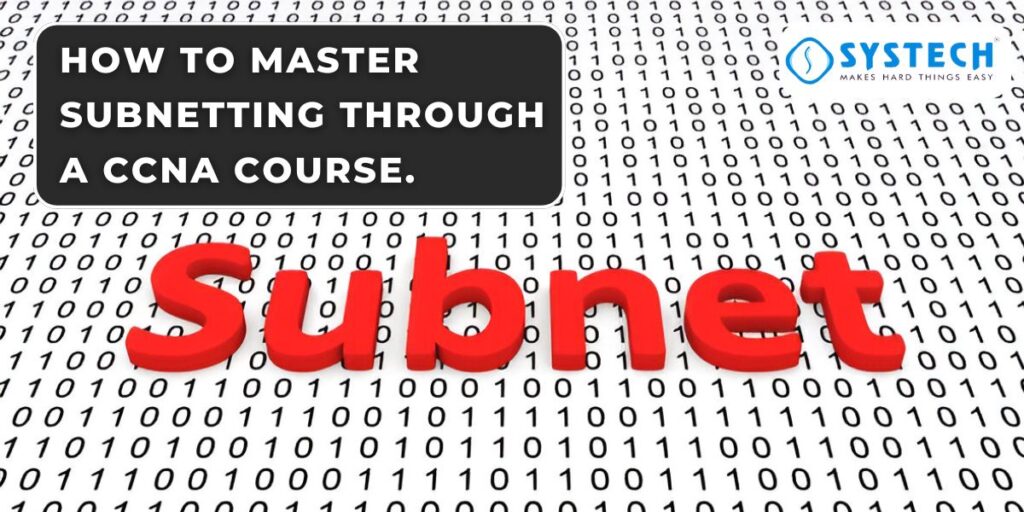Table of Contents
How to Master Subnetting Through a CCNA Course: A Comprehensive Guide
Introduction
What is Subnetting?
Why Master Subnetting?
Mastering subnetting is essential for several reasons:
- Network Efficiency: Smaller networks reduce traffic congestion.
- Enhanced Security: Segmenting networks helps isolate potential security breaches.
- Better Organization: Simplifies network management and troubleshooting.
- CCNA Exam Success: Subnetting is a significant part of the CCNA exam, and a solid understanding is necessary to pass.
- Career Advancement: Employers highly value candidates who can design and manage networks effectively.
Understanding the Basics of Subnetting
What is an IP Address?
An IP address is a numerical label assigned to each device connected to a computer network that uses the Internet Protocol for communication. There are two primary versions: IPv4 and IPv6.
- IPv4: Uses a 32-bit address format (e.g., 192.168.1.1). Due to its limited address space, it is gradually being replaced.
- IPv6: Uses a 128-bit address format (e.g., 2001:0db8:85a3:0000:0000:8a2e:0370:7334). It provides a significantly larger address space, addressing the limitations of IPv4.
An IP address consists of two parts:
- Network Address: Identifies the network to which the device belongs.
- Host Address: Identifies the specific device within that network.
For example, in the IP address 192.168.1.10, the first three octets (192.168.1) might represent the network, while the last octet (10) represents the specific host within that network.
What is a Subnet Mask?
A subnet mask is a 32-bit number that separates the IP address into the network and host portions. It works alongside the IP address to determine the network a device belongs to.
- How it works: The subnet mask uses a series of consecutive 1s to represent the network portion and consecutive 0s to represent the host portion. For example, a subnet mask of 255.255.255.0 indicates that the first three octets of the IP address represent the network, and the last octet represents the host.
Default subnet masks:
Class A: 255.0.0.0
Class B: 255.255.0.0
Class C: 255.255.255.0
Here’s an example:
IP Address: 192.168.1.10
Subnet Mask: 255.255.255.0
Network Address: 192.168.1.0
Host Address: 10
Key Terms in Subnetting
- Subnet: A logical subdivision of an IP network.
- Supernet: Combining multiple smaller networks into a larger one.
- CIDR Notation: A shorthand way to represent the subnet mask (e.g., /24 means 24 bits are used for the network portion).
- VLSM (Variable Length Subnet Mask): Allows different subnets to have different subnet masks, optimizing address allocation.
The Role of Subnetting in the CCNA Course
How Subnetting Fits into the CCNA Curriculum
Subnetting is a core component of the CCNA curriculum. It touches upon several key areas:
- Network Design: Creating efficient and scalable network architectures.
- IP Addressing: Assigning and managing IP addresses effectively.
- Routing: Understanding how data packets are routed between subnets.
- Troubleshooting: Diagnosing and resolving network connectivity issues.
It’s not just about memorizing formulas; it’s about understanding how subnetting impacts overall network performance and security.
Skills Required to Master Subnetting
To truly master subnetting, you’ll need:
- Analytical Thinking: Breaking down complex problems into smaller, manageable parts.
- Problem-Solving Skills: Identifying and resolving subnetting-related issues.
- Binary Math: Understanding the binary numbering system and how it relates to IP addresses and subnet masks.
- Attention to Detail: Accuracy is crucial when calculating subnets.
Step-by-Step Guide to Mastering Subnetting
Step 1: Learn the Fundamentals
- Understanding Binary Math:
- Computers use the binary (base-2) numbering system, which consists of 0s and 1s.
- Each position in a binary number represents a power of 2 (e.g., 2^0, 2^1, 2^2, etc.).
- Conversion between Binary and Decimal:
- To convert binary to decimal, multiply each digit by its corresponding power of 2 and add the results.
- Example: 10101010 = (1×2^7) + (0x2^6) + (1×2^5) + (0x2^4) + (1×2^3) + (0x2^2) + (1×2^1) + (0x2^0) = 128 + 32 + 8 + 2 = 170
- To convert decimal to binary, repeatedly divide the decimal number by 2 and record the remainders. The remainders, read in reverse order, form the binary number.
- Example: 170 / 2 = 85 remainder 0, 85 / 2 = 42 remainder 1, …, binary = 10101010
- To convert binary to decimal, multiply each digit by its corresponding power of 2 and add the results.
Step 2: Practice Calculating Subnets
- Techniques for Calculating Subnets Manually:
- Determine the number of subnets needed.
- Calculate the number of bits to borrow from the host portion.
- Determine the new subnet mask.
- Calculate the number of usable hosts per subnet.
- Identify the valid subnets, broadcast addresses, and usable host ranges.
- Using Subnet Calculators Effectively:
- Online subnet calculators can automate the process.
- However, it’s important to understand the underlying principles rather than relying solely on calculators.
- Popular subnet calculators include SolarWinds Subnet Calculator and Subnetting.net.
Here’s a quick example:
Scenario: You have a Class C network (192.168.1.0) and need 4 subnets.
Subnets Needed: 4 (which is 2^2, so you need to borrow 2 bits).
Bits to Borrow: 2 bits.
New Subnet Mask: Default Class C is 255.255.255.0. Borrowing 2 bits means the new subnet mask is 255.255.255.192 (192 because 11000000 in binary is 128 + 64 = 192).
Usable Hosts per Subnet: With 2 bits borrowed, you have 6 bits left for hosts. 2^6 - 2 = 62 usable hosts per subnet (subtract 2 for the network and broadcast addresses).
Step 3: Explore Variable Length Subnet Masking (VLSM)
- Definition and Benefits of VLSM:
- VLSM allows you to use different subnet masks for different subnets within the same network.
- It optimizes IP address allocation, reducing wastage.
- Practical Examples of VLSM in Real-World Scenarios:
- Imagine a company with two offices: a main office requiring 100 hosts and a branch office needing only 10 hosts. Without VLSM, you’d have to allocate a /24 subnet (254 hosts) to both, wasting addresses in the branch office. With VLSM, you can allocate a /25 subnet (126 hosts) to the main office and a /28 subnet (14 hosts) to the branch office, efficiently utilizing IP addresses.
Step 4: Engage with Real-World Scenarios
- Case Studies Demonstrating Effective Subnetting:
- Consider a hospital network that needs to separate patient data, administrative tasks, and guest Wi-Fi. Subnetting allows them to isolate these networks, enhancing security and maintaining regulatory compliance.
- Common Mistakes and How to Avoid Them:
- Overlapping subnets: Ensure that subnet ranges do not overlap to prevent routing conflicts.
- Incorrect subnet mask calculations: Double-check your calculations to avoid assigning incorrect subnet masks.
- Forgetting to account for network and broadcast addresses: Remember to subtract 2 from the total number of addresses in a subnet to get the number of usable hosts.
Resources for Learning Subnetting
Recommended Books and Courses
- Books:
- “CCNA 200-301 Official Cert Guide” by Wendell Odom: Comprehensive guide covering all CCNA topics, including subnetting.
- “IP Subnetting from Beginning to Mastery” by Network Warrior: Focused on subnetting, providing detailed explanations and examples.
- Online Courses:
- Cisco Networking Academy: Official Cisco courses providing hands-on experience with subnetting.
- systech
Video Tutorials and YouTube Channels
- YouTube Channels:
- David Bombal: Provides clear explanations of CCNA topics, including subnetting.
- NetworkChuck: Offers engaging videos on networking concepts and practical examples.
- Importance of Visual Learning:
- Visual aids like diagrams and animations can simplify complex subnetting concepts.
Tips for Success in the CCNA Exam
Study Techniques for Effective Learning
- Active Recall: Test yourself frequently on subnetting concepts.
- Spaced Repetition: Review subnetting topics at increasing intervals to reinforce learning.
- Practice Exams: Simulate the CCNA exam environment to prepare for the actual test.
Time Management Strategies
- Allocate Sufficient Time: Dedicate ample time to subnetting as it is a crucial topic.
- Break Down Study Sessions: Divide your study time into smaller, manageable chunks.
- Prioritize Topics: Focus on areas where you struggle the most.
Utilizing Practice Questions
- Importance of Practice Exams: Practice exams help you identify your strengths and weaknesses.
- Focus on Subnetting Questions: Pay close attention to subnetting-related questions to reinforce your understanding.
- Review Incorrect Answers: Analyze your mistakes to learn from them and avoid repeating them.
Conclusion
Recap of Key Points
Encouragement for Continuous Learning
Related Courses
FAQs
What are the common challenges faced while learning subnetting?
- Understanding binary math.
- Calculating subnet masks manually.
- Applying VLSM in real-world scenarios.
How long does it take to master subnetting?
It depends on your prior knowledge and dedication, but typically it takes several weeks to a few months of consistent study and practice.
Can I learn subnetting without prior networking knowledge?
Yes, but it will be more challenging. Start with the basics of networking before diving into subnetting.
What tools can help me practice subnetting?
- Subnet calculators (e.g., SolarWinds Subnet Calculator).
- Online quizzes and practice exams.
- Network simulation software (e.g., Cisco Packet Tracer).
How do you calculate the subnet mask from an IP address?
To calculate the subnet mask from an IP address, follow these steps:
- Identify the IP address class (Class A, B, or C).
- Use the default subnet mask based on the class (e.g., 255.255.255.0 for Class C).
- If subnetting has been applied, calculate the custom mask by converting the number of subnet bits into binary format.
How do you calculate the subnet mask from an IP address with an example?
Example: Given an IP address of 192.168.1.0/26, the CIDR /26 indicates the subnet mask.
Steps:
- Convert /26 into binary: 26 bits set to 1 (11111111.11111111.11111111.11000000).
- This gives a subnet mask of 255.255.255.192.
- The subnetted network would have 64 IP addresses (2^(32 – 26)).
What is subnetting?
Subnetting is the process of dividing a large network into smaller sub-networks (subnets). It allows for efficient use of IP addresses, better network organization, and improved security.
What are the benefits of subnetting?
- Efficient use of IP addresses
- Reduced network congestion
- Improved network management and security
- Easier fault isolation
Which of the following is not true about subnetting?
a. It increases the number of usable IP addresses.
b. It improves network security.
c. It allows for network segmentation.
d. It reduces the size of broadcast domains.
Answer: a. It increases the number of usable IP addresses.

